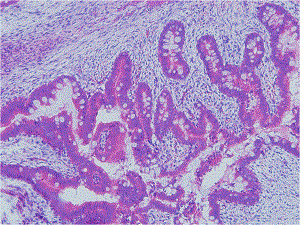
Custom iPSC Generation Service
iPSC generation is a complicated cellular process, which is a time-consuming and technically challenging technique. Scientists at abm have developed streamed-line protocols for efficient iPSC generation with episomal plasmids, viral vectors, and recombinant proteins.
With 100% success rate, abm is guaranteed to provide highly efficient reprogramming of somatic cells into iPSCs with our lentiviral vectors. Custom transgene-free, footprint-free iPSC generation (at 80% success rate) is also available with our non-integrating system, providing safety for the iPSCs to be used in drug discovery and cell therapy applications.
Molecular and functional assays such as flow cytometry, karyotyping, and tetratoma formation are often used to characterize the pluripotency of the newly-established iPSCs. Each of these services will be provided with a comprehensive report suitable for publications.

“abm has always been very helpful with technical assistance in any of our questions and concerns. I also consider the price for the services provided as very competitive, as other companies charge a multiple of abm‘s price. I would highly recommend abm‘s service to any customer interested in custom-made pluripotent stem cells.”
Dr. Cameron Moshfegh, ETH Zurich, iPSC generation
Service Details
Service
| SERVICE NAME | CAT. NO. | UNIT |
|---|---|---|
| iPSC Generation from Human Peripheral Blood or Fibroblast by Lentiviral Vectors | C052 | 1 Service |
| Integration-Free iPSC Generation by Mini-circle DNA | C054 | 1 Service |
| Integration-Free iPSC Generation by Proteins | C055 | 1 Service |
| Integration-Free iPSC Generation from Human Peripheral Blood by Episomal Plasmids | C120 | 1 Service |
| Integration-Free iPSC Generation from Human Fibroblast by Episomal Plasmids | C124 | 1 Service |
Additional Info
coming soon
Related Products
FAQs
What is the protocol for freezing iPSCs?
4-5 days after cell split, when iPSCs reach a confluency of 30-60%, aspirate out spend medium and add 1ml 0.5mM EDTA/PBS. Incubate cells at 37C for ~5min. When colonies start to detach, gently harvest all the cells into a 5-ml or 15-ml or 50-ml tube by pippeting 1-2 times. Avoid multiple pippetting. Breaking down clumps into single cells may substantially decrease cell survival. May add iPSC medium to harvest all the cells. Spin down at 200g for 2-3 minutes. Carefully aspirate out supernatent and gently resuspend cells in 0.5ml iPSC medium. Add 0.5ml freezing medium (TM023) and ROCK inhibitor. Mix well by flipping the vial and transfer the medium to a cryovial. Finally transfer the vial to -80C freezer for short-term storage (days to weeks). After cells are frozen, you may then transfer the vial to liquid nitrogen tank for long-term storage (years).
What is the recommended seeding density for iPSCs?
iPSCs require seeder cells before thawing and plating the iPSCs. Seed ~3x105 feeder cells in each well of a 6-well plate. After thawing the iPSCs, put all the cells from the vial into 1 well. After several days, you may start splitting the iPSCs into multiple wells depending on how many cells survived. The density mentioned above is for the seeder cells which should be at 3x105. Afterwards, please plate the entire vial of iPSCs into one well at 106 concentration.
What information can you provide to verify iPSC generation if I choose not to order any of the characterization services?
We only provide clones that have undergone FACS verification for expression of pluripotency markers such as OCT4, NANOG, TRA-1-60. It is possible to assay for additional markers upon request.
We will also only pick from colonies displaying a typical iPSC morphology.




